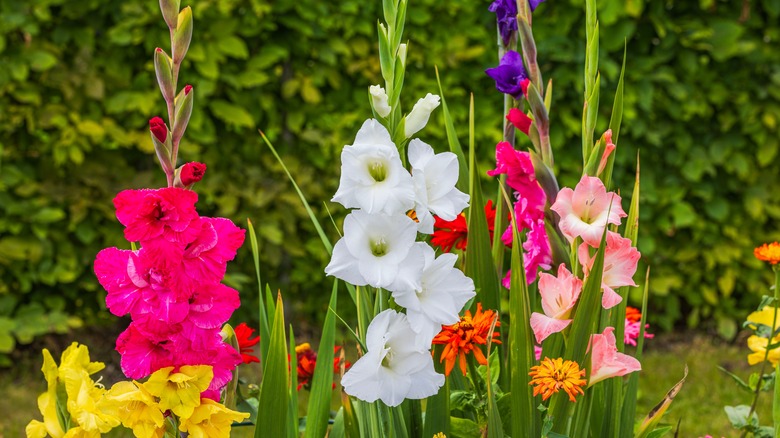How Do You Keep Gladiolus From Falling Over?
We may receive a commission on purchases made from links.
There's nothing quite as impressive and eye-catching as a whole bunch of brightly colored gladiolus (Gladiolus spp.) blooming in your yard. These popular summer bulbs are a true visual delight. Even better, they're also perfect for a cut flower garden. But there's one problem with these stunners — the flowers are so huge and heavy that they'll eventually flop over because their stems are just not strong enough to support all that weight. If you want to avoid the sad sight of going out to your yard one morning and seeing all your beautiful gladiolus lying down on the ground, you'll need to find some clever ways to stop them from falling over. Of course, the most obvious method is to stake your blooms using something like metal stakes.
The benefit of metal stakes is that they're highly durable and won't deteriorate like some other types of staking products. This means you can use them again year after year, making them a worthwhile investment. For example, this pack of 25 plastic-coated metal stakes from Xiny Tool would be a good choice because they're also rust-proof. And at 58 inches tall they're an ideal height for many gladiolus. If you end up with more stakes than you need, you can even get super creative and use one of the stakes to flip old dishware into an adorable bird feeder.
The best staking method for gladiolus
There are plenty of ways to stake your gladiolus. One popular method is to use thin metal stakes that are robust enough to keep your top-heavy blooms upright and are about 6 inches shorter than flowers' mature height. Depending on the species, gladiolus can reach a massive height of 6 feet, so you may need stakes that are at least 5 feet tall. These will provide ample support without being too visible, especially if you choose ones that are green in color and blend in effortlessly with the stems.
Once your glads start to bloom and the stems are around ⅓ of their mature height, grab your stakes and push one into the soil next to each flower. Take care when you're doing this because you don't want to accidentally pierce the underground bulbs or damage any roots. When the supports are in place, you should loosely tie each flowering stem to its individual stake. You can use special plant ties, paper covered wire ties, or even short lengths of garden twine for this. Just make sure that whatever you use will not damage the stems. The best way to do this is to create a figure 8 or double loop. This is done by looping the tie loosely around the stem, crossing the ends over to form an x, and then tying them onto the stake. As the flowers continue to grow in height, you can add additional ties, if necessary.
